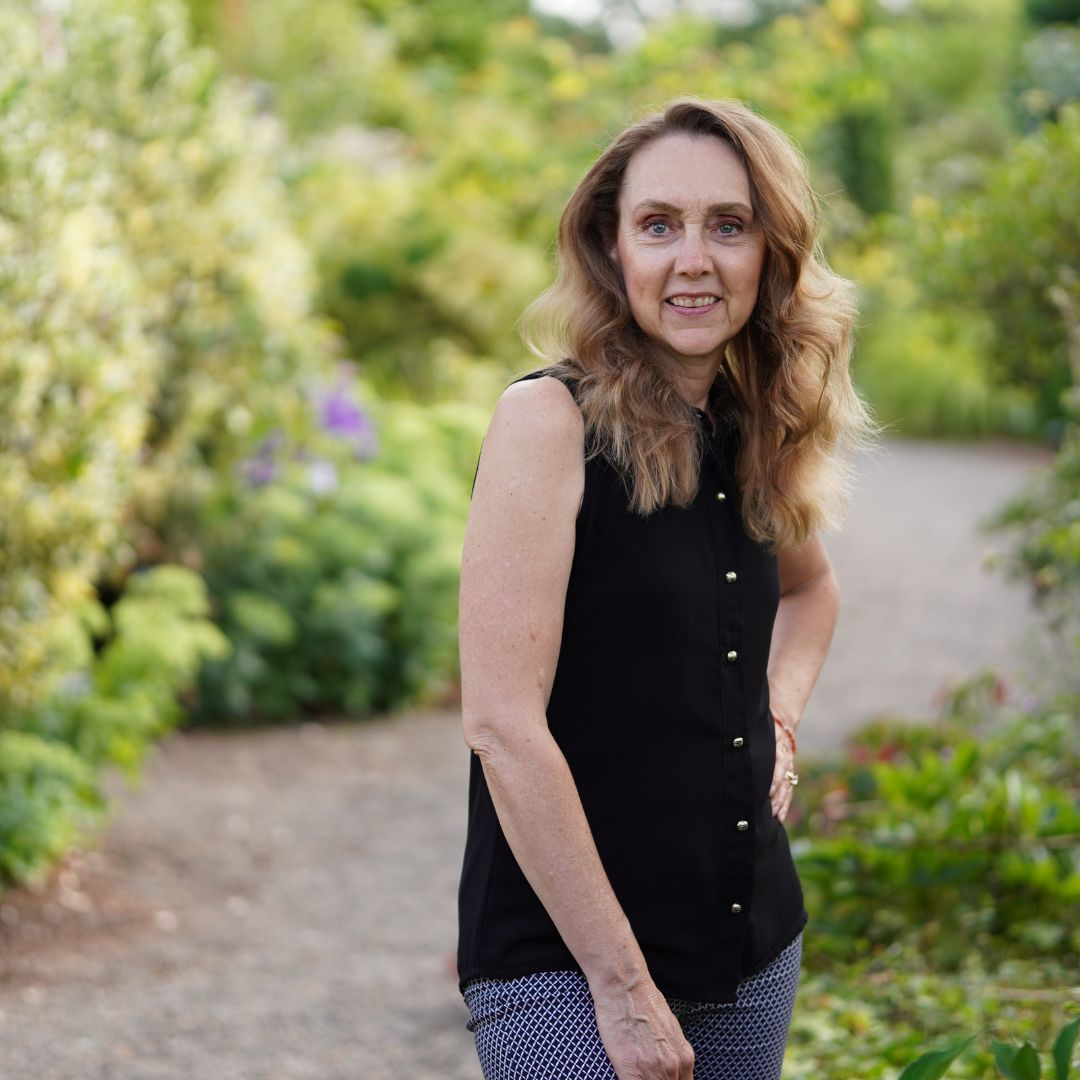As a mom, I became fully aware of the health of my daughter even before I became pregnant. When we talked about having a child, I made reading my number one priority. I made it my mission to find out how to get my body in top shape for pregnancy, and how to ensure she had the best of everything while she developed.
I knew that my health impacted her. What I ate, how I felt, when I exercised, and how much I slept impacted everything throughout her development.
As moms, we understand that. It’s a part of motherhood.
I remember sitting on the couch, sobbing from time to time when I couldn’t follow the rules.
One book recommended that I eat lots of broccoli. I tried, but it came back up as fast as I could send it down. Nope, broccoli didn’t work during my pregnancy. (I saw my husband bite back a smile, holding my hand and telling me everything would be okay. Our child would be just fine without broccoli.)
Everything we do during those precious nine months impacts our children. It sets the stage for good health as they are born, grow, and mature. As moms, we know this. As parents, we get this.
But what always surprises me is that people haven’t transferred that knowledge to the way we grow our food.
Mother Earth
Mothers have a deep-rooted understanding of what it takes for creation.
Mother Earth is no different. Left on her own, Mother Earth supplies all of the nutrients needed to grow whatever is local to the region.
Soil quality is measured by the level of nutrients in the soil structure. Plants grow better in nutrient-rich soil. If you’ve ever planted a seed, or repotted a plant that’s outgrown its pot, you add fresh new soil rich in organic matter. When a plant has the proper nutrients, it thrives.
For most of human civilization, we have relied on Mother Nature to work her magic. We traveled between areas to select what was in season.
That all changed with industrialization. We suddenly had the resources and tools to plant seeds and control growth. It started as a huge experiment to attempt to feed a hungry world.
And that’s when problems began.
Monocropping
Broccoli is an excellent, heart-healthy choice that provides a wealth of nutrients. It has only a trace amount of fat, is cholesterol-free, and contains a small amount of omega-3 fatty acids. For a vegetable, it contains a significant amount of protein. It’s also bursting with lots of vitamins and minerals, such as vitamin C, vitamin K, manganese, potassium, and other essential B vitamins.
Compare that with other fruits and vegetables, and you’ll find each has its own unique characteristics. They offer different minerals, vitamins, and antioxidants.
As plants grow, they need essential nutrients to thrive: carbon, hydrogen, and oxygen, among others. As they grow, they take what they need, and mature to include what nutrients they’ll provide to us humans as we consume them.
However, plants also give back to the soil. Each plant has a different root structure, which interacts and gives back to the soil in different ways. Traditionally, farmers would monitor the soil conditions very closely to ensure soil structure was top-notch. They would introduce different plants and rotate crops to give the soil what it needed. It ensured the soil was always rich in nutrients, which meant the food produced on the land would also be as nutritious as it could be.
Then came monocropping. Monocropping started a century ago based on a theory that it would lower hunger rates and increase yield production. Through a series of pesticides, herbicides, and high-yield variety seeds, the goal was to create crops that produced enough food to feed the world. It was an experiment that has largely failed, though there is still a huge push to make it profitable. If you’re interested in reading an in-depth look at the monocropping practice, I suggest you read the Food Revolutions informative article.
No longer is soil looked at for the nutrients it provides. Instead, the same crop is planted one on top of the other, a practice that doesn’t give the land time to rest, or nutrients to replenish the soil. With a huge increase in soy and corn, they’ve taken over land that once grew nutritious fruits and vegetables. That pushes other food production to less acreage, and creates problems in those fields too.
As the soil degrades, it’s more susceptible to bacteria, fungi, or other organisms that attack crops. To combat these problems, farmers continually turn to pesticides, with glyphosate being one of the worst. It’s injected into the seeds to combat pests as it grows. It’s sprayed on crops throughout the growing process, including harvest. Glyphosate has been deemed safe for human consumption, but long-term studies aren’t available to show the impact throughout a lifetime. It’s impossible to know for sure; it’s only been widely used in food production since the 1990s. For a deeper dive into chemical farming, this is required watching.
The link between soil and health – what can you do
Are you beginning to see yourself as one gigantic science experiment? I had that feeling back in the 1990s when I first discovered this was a part of our world. But here’s the thing; we’re right here in the middle of all of it. We have no choice but to live here. What do we do?
I believe that we’ve become misguided in our world-view. We look at ourselves separate from Mother Earth, when in fact, she’s the very essence of who we are.
Everything that happens in this world is to create an environment in which we can thrive. It’s the air, water, land – everything we need for our very existence.
We need air to breathe – contaminate the air and it impacts our health.
We need water to survive – contaminate the water and it impacts our health.
We need the land to be healthy to create bountiful meals – when it’s contaminated, it will impact our health.
We’re trying to override a system that has been in place for millions of years, one our ancestors knew and understood when humankind first walked this planet.
Yet now, we’re trying to override it all, change everything about the way we live and eat, thinking we won’t face consequences.
We will. We are.
It’s hard to put thirty years of learning into one post. I’ve given a very short overview here, with a couple of links to more comprehensive resources. I fully respect both of these communities, and have learned a wealth of information from them in the past.
As consumers, as people trying to navigate day to day life, I think it’s more important than ever to have critical thinking skills. Be aware of what goes into your food supply. Be mindful of what you’re eating. Don’t just listen to what marketing throws at you; dig deep and find out for yourself.
The EWG (Environmental Working Group) is an organization dedicated to research and education to help you make smart, healthy decisions. Every year they come out with the EWG Dirty Dozen Guide that lists the top 12 foods to avoid. These foods are filled with pesticides when grown under normal conditions. If at all possible, avoid conventional and always buy organic.
Also take time to know your sources. If at all possible, shop farmers markets. Don’t just pick anything up assuming it’s safe; get to know the farmers directly. Talk to them about where they grow, and what chemicals they use during production. If they believe in natural and safety, they will be more than willing to discuss their approach.
Buy organic. I say that repeatedly in everything I write. If you’re looking for one way to “go healthy”, I would tell you this is a great place to start. Stick to avoiding the EWG Dirty Dozen list when you buy, investing in organic. EWG also produces a Clean Fifteen list to help you select conventional fruits and vegetables when they aren’t bad for your health. These lists can be timesavers when you’re at the market trying to decide how to keep your family healthy.
“Where do I start? I’m so confused by the information out there, I don’t even know where to begin? How did you learn all of this?”
When I received that message, I nodded. I get it, I do. It can all be a bit overwhelming sometimes as you fall down the rabbithole of our supposed food system. My advice is always: Take one step at a time.
Pick one thing. Do that one thing until it becomes a habit. Then do one thing more.
Remember Mother Earth in everything you do. Is it good for the air? The water? The land? Or are we trying to override the system?
I’m a part of the slow living movement because I believe it helps us become more in touch with our roots. Being conscious of what impacts my surroundings helps me be more aware of how it impacts me.
Mothers are nourishers. We understand that what we do impacts those we care deeply for. We choose to give our children the best of everything, knowing their survival depends on it.
Mother Earth is sending the same message to her children. It starts with the soil.
Want a healthier future? You can’t ignore how it’s grown.
xoxo

If you haven’t downloaded my Foundational Wellness Class, do it now. It helps you look at your current approach to wellness, and make changes for a Wellthy plan.


+ show Comments
- Hide Comments
add a comment